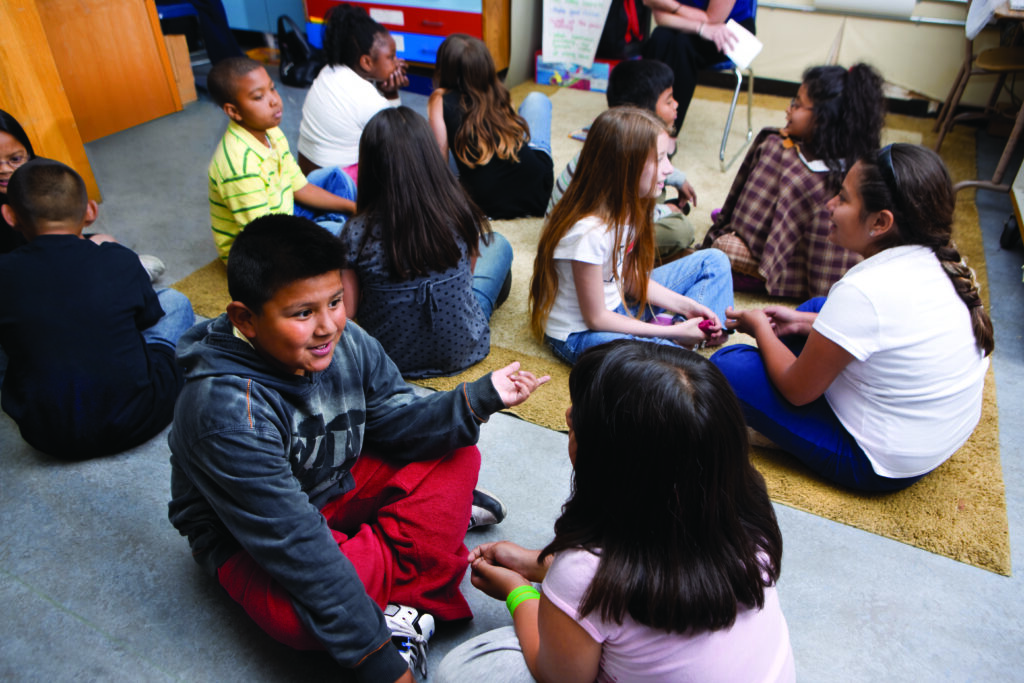
The problem of chronic absence is complex and requires a multipronged approach that involves an entire school/district as well as families and community partners.
In this blog, we consider the importance of students’ sense of belonging in addressing the problem of chronic absence. We explore how social and emotional learning—when implemented effectively—can be a part of the solution for schools and districts struggling with chronic absence.
Understanding the Problem of Chronic Absence
School attendance is a growing concern across the country, with an increasing number of students identified as chronically absent. Defined as missing 10 percent or more of school days for any reason, chronic absence therefore puts a student’s learning—and their future—in jeopardy. According to federal data from the 2020–21 school year, approximately 14.7 million students nationwide were chronically absent. This fact is even more sobering when we consider that pre-pandemic the number was closer to 8 million.
According to the nonprofit organization Attendance Works, by 2021–22, 43 percent of schools showed extreme levels of chronic absence. The biggest jump is happening in elementary schools. Extreme chronic absence increased from 7% to 38% of all elementary schools!
Given the vital foundational literacy work that occurs in grades K–5, these statistics raise red flags for every educator. For example, there is a strong likelihood that a chronically absent student will not become a fluent, proficient reader.
There is a strong likelihood that a chronically absent student will not become a fluent, proficient reader.
Chronically Absent Students May Not Feel a Sense of Belonging
There are many reasons why a student might be chronically absent, including, but not limited to, transportation challenges, food or housing insecurity, or difficulties accessing health care. While these barriers must absolutely be addressed, they require specific interventions that are beyond the scope of this blog post.
One barrier we might, however, address about chronically absent students is whether they have a sense of belonging at school.
Unfortunately, for many students, school is not a welcoming place where the student feels seen, heard, or understood. They are disengaged with the school community. They don’t have meaningful relationships with adults or peers at school.
One barrier we might, however, address about chronically absent students is whether they have a sense of belonging at school.
Schools and districts can use social and emotional learning (SEL) to improve students’ sense of belonging and help reduce chronic absence, but only when they implement it thoughtfully and in a comprehensive, integrated way. Too often, educators treat SEL as a checklist item, addressing it perfunctorily and achieving little to no meaningful impact.
Steps for Schools and Districts
SEL becomes a powerful agent of change and is more likely to help reduce chronic absence if a school/district:
Unified Approach
- Takes a unified schoolwide—or districtwide—approach.
- Includes everyone in this work, not just students. Are we practicing what we preach?
- Includes all adults on staff, not just teachers. Often the school interactions that affect us the most happen outside a classroom. Every adult on staff has insights to bring to this work—and deserves the same caring, respect, and voice as teaching staff.
- Includes families, caregivers, and community partners. We cannot truly understand our students if we haven’t taken the time to build bonds with their families and communities. If a family member or caregiver doesn’t feel a sense of welcome or belonging on a school campus, their student is also unlikely to feel it.
- Integrates SEL into the daily fabric of school life and culture. SEL is for the whole year, not just the first month of school!
- Invests in a high-quality, evidence-based SEL program. When implemented with fidelity across an entire school, a program like this can help ensure a common language, shared goals, and an intentional building of SEL skills throughout the school year and across grade levels.
- Understands that SEL needs to be part of academic instruction, too. If your school already has an SEL program, that’s great! Now, to take your school/district’s SEL skills to the next level, integrate SEL into academic instruction itself.
- Much of our students’ learning happens via speaking and listening, as students share their thinking and actively take in the ideas and perspectives of others.
- By infusing SEL into this daily vital academic work, the quality of students’ speaking and listening skills increases—and simultaneously, students practice and refine their SEL skills.
- Integrating SEL into academics is done most effectively when all educators in a school are using the same language around SEL and speaking and listening skills.
- Discipline is sometimes exempt from an otherwise well-intentioned and thoughtful approach to SEL. Consider whether their approach to discipline is actually in conflict with their approach to SEL. Too often our discipline practices undermine the SEL work we are doing for the very students who need it most.

Reimagining SEL as a Catalyst for Change in Chronic Absence
Chronic absence is a complex issue that demands comprehensive, systemic solutions. When thoughtfully implemented, SEL has the potential to be a transformative force, fostering a sense of belonging, strengthening relationships, and equipping students with essential skills for both academic and personal success.
A truly effective approach to SEL, however, goes beyond surface-level implementation. It requires a unified effort across an entire school or district, involving all staff members, families, and community partners. Moreover, by integrating SEL into the daily rhythms of school life, embedding it within academic instruction, and ensuring that discipline practices align with SEL principles, schools can create environments where every student feels valued and supported.
Get Caring School Community Sample Lessons
Download sample teacher’s and principal’s packages for grades K–8.
Related:
How Kailua Elementary Built Community and Grew Students’ Sense of Belonging
